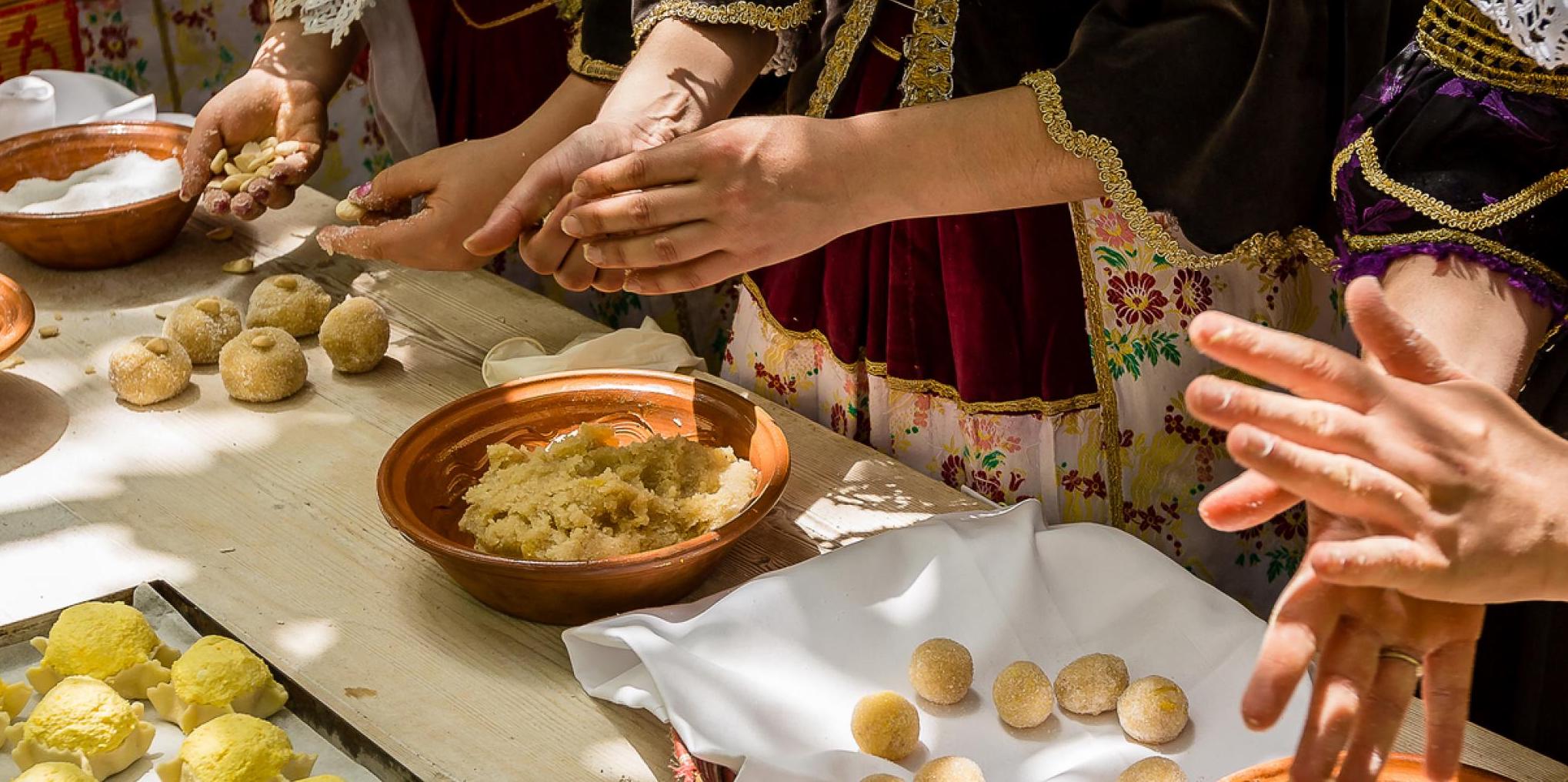Sardinian Cuisine In The Middle Ages 0 Comments

During the Middle Ages millennium everyone indeed passed through Sardinia: from the barbarian dominations to the Saracen incursions, from the Byzantine period to the autonomy of the Judicates, from the influences of the Maritime Republics of Genoa and Pisa to the Catalan/Spanish colonization.
A millennium of great transformation running from the classical ancient Roman culture to the barbarian one, during which the transformation of the Sardinian food world traveled in parallel: from the Roman one based on wheat-wine-oil and cheese and meat, to the barbarian populations’ one which introduced game hunting, fishing, pig breeding and the picking of wild fruit. The different civilizations combination has led to the new agroforestry-pastoral system.
In Sardinia the fireplace is the center of the culinary life of the Middle Ages, and in terracotta containers and copper pots hung and suspended, or using skewers, meat and fish were boiled, roasted, or cooked under the cinder, but also soups and chickpea flour soups. Meat and fish were preserved in salt, to maintain their original flavor through time. Sardinian medieval cuisine knew the use of spices, expertly applied to the strong flavors of game hunt. Bread was cooked in medieval ovens, always present in Sardinian diet since the Nuragic period, as was sheep's cheese, mature and fresh. Delicious Cheese that is still eaten today.
Sardinian agriculture was regulated by the Byzantine Rural Code, then resumed at the end of 1300 in the Carta de Logu by Eleanor of Arborea and in the various Condaghi, the religious communities’ registers.
Social differences were also revealed in the diet. The poor fed mainly on cereal and legume soups, accompanied by a slice of bread. The richest, since at the time hunting and fishing was only for the aristocratic classes and forbidden to the people, indulged in various types of game hunts such as wild boars, bucks, deer and mouflons, hares, wild ducks, geese and little bustards. Pigeons, doves, turtle doves, partridges, quails and throstle meat, reserved for the most refined palates, were first boiled and then wrapped with myrtle leaves to be aromatized and flavored, called "murtidus".
This type of aristocratic cuisine brought to Sardinia by the various rulers was the same used in all the courts of Europe, almost a Mediterranean "globalization". In the Sardinian Middle Ages, the way of consuming meals also changed: while the Romans ate lying down, they now ate sitting on stools or benches.
With Doria's dominion, (1100-1400 AD.), the chickpeas cultivation, toasted, ground and prepared into chickpea flour, became widespread. Subsequently with the Spain domination new dishes and cooking methods arrived, with new varieties of olives, artichokes and new vines.
Viticulture has always been present on the island, as the Nuragic people of the Iron Age, (900-750 BC.), drank red wine, a kind of three thousand years ago Cannonau, becoming the first Mediterranean producers of red wine. In the Middle Ages, the production of increasingly refined wines developed. Sources indicate three types of wine: Latin, Greek and the Sardinian wine (perhaps Cannonau). Wines were also made from raisins. From the wine must was obtained the "saba", the oldest sweetener in the world, already present in Roman cuisine, still used today for typical Sardinian desserts, such as "sas tericas/tilicas".
Sardinian cuisine in its history is a tasty link between the past and the present that continues to delight today's palates with its wonderful culinary heritage.
“Cuisine is not just what we eat. It is the processing of raw materials according to techniques developed over the centuries. It is the ambition of the good and the beautiful converging on a plate”. (Heinz Beck)
--Written by Daniela Toti
Share your opinion with us!